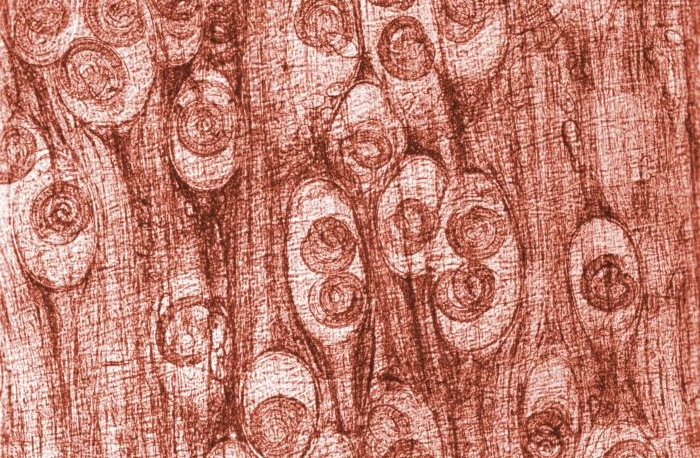You might have noticed, but we changed our name. We could tell you that we wanted to find something that suited our voice or better reflected the mission of this special series, but the truth is we inadvertently chose a name that closely resembled that of a great blog about vaccines (so sorry about that!), and we didn’t want to confuse anyone … Enjoy!
1. More than half of all routinely recommended vaccines given to children were all developed by the same guy.
Musicians have Mozart. Physicists might have Einstein. But VacciNerds have Maurice Hilleman.
Hilleman worked to develop eight of the 14 routinely recommended vaccines on the childhood immunization schedule, and 36 vaccines in total. He is credited for likely saving more lives than any other scientist in the 20th century.
But despite his contributions to the world of vaccinology, few people know his story.
2. The first attempt at immunization actually involved snorting smallpox scabs.
Long before Edward Jenner developed the first-ever vaccine, there was a technique known as variolation. People in Asia, Africa and the Ottoman Empire would take scabs from a smallpox patient and blow them into people’s noses to purposely infect them with smallpox. The induced illness was often milder, and the result was lifelong immunity from the disease.
Given the rigorous testing we now use to ensure vaccine safety, the technique seems haphazard and irresponsible by today’s standards. But compared to a naturally acquired infection, it was a much better option. Only one to two percent of individuals undergoing variolation died, compared to the roughly 30 percent who died after contracting smallpox on their own.
3. Despite more vaccines, kids actually receive fewer antigens now than they did 100 years ago.
Antigens, you’ll recall, are the part of the pathogen — a disease-causing agent, such as a virus or a bacterium — that the immune system learns to recognize and fight. When our body encounters these antigens (whether by vaccination or natural infection),, we develop antibodies matched to a particular antigen. This allows the body to identify and destroy future invasions from the same pathogen, preventing you from getting sick.
It’s reasonable to assume that the more vaccines are added to the schedule, the more antigens are introduced into a child’s immune system. But we’ve come a long way in vaccine technology. And while children today might receive more vaccines than their parents (14 to their parents’ seven for example), they actually receive fewer antigens than the generations before them.
In 1900, the only vaccine that was routinely given to children was the smallpox vaccine, which contained roughly 200 antigens. In 1960, kids routinely received five vaccines, totaling 3,217 antigens. In 1980, the seven vaccines administered contained 3,041 antigens.
In 2000? The 11 routine vaccines contained fewer than 150.
4. Pregnant women can (and should!) be vaccinated.
There are a lot of “Do’s and Don’ts” in pregnancy. But while it’s a good idea to steer clear of alcohol and poorly cooked meats, there are a few vaccines that pregnant women should receive to protect their own health and the health of their child.
Diseases like flu can be incredibly dangerous for pregnant women. In fact, women in their second or third trimester are more than four times more likely than nonpregnant women to be hospitalized because of influenza-related complications. That’s why the Centers for Disease Control and Prevention (CDC) recommend a flu shot for women pregnant during flu season. It’s the best defense we have against this deadly disease.
Another important vaccine for pregnant women is the Tdap (tetanus, diphtheria and pertussis) vaccine. When given in the third trimester, Tdap can help not only protect the mom from getting pertussis (or “whooping cough”), but it also passes on that protection to the baby. This is important because pertussis is highly contagious and is much more serious for small children than adults.
Not all vaccines are recommended or safe during pregnancy, however. It’s important for pregnant women to talk with their provider about what vaccines they might need.
5. The first vaccine against cancer was licensed in the 1980s.
You’ve probably heard about the HPV vaccine and its ability to protect against cancer. Given that HPV is responsible for 5 percent of all cancers worldwide, the arrival of this vaccine in doctors’ offices in 2006 was a huge victory for public health.
But the HPV vaccine wasn’t the first cancer vaccine available. That title goes to the very first Hepatitis B vaccine, licensed in 1981.
More than 1,000 people are estimated to die every year because of Hepatitis B-related liver cancer — some of whom were infected as infants. The first vaccine (created by none other than our personal hero Maurice Hilleman) was created using purified plasma. It was safe and effective at preventing Hepatitis B– but it arrived just as people were becoming terrified of HIV and tainted blood products, and was not well received.
But Hilleman was nothing if not tenacious, and a new Hepatitis B vaccine using recombinant DNA technology was licensed in 1986.
The vaccine is so safe that its given to infants the day they’re born.
Jane manages the Vaccine Finder project at Health Map, the host site of the Disease Daily. Robyn is a contributing writer for the Disease Daily and works as a project manager for a non-profit focused on vaccine education. Both are fully up-to-date on their immunizations.

